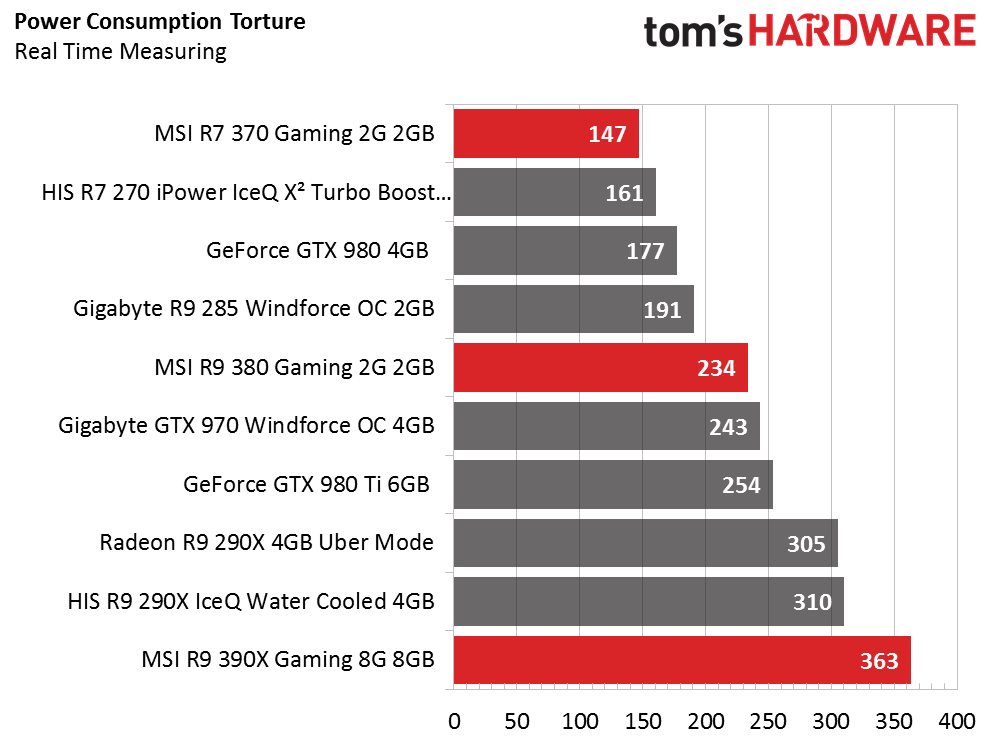AMD Radeon R9 390X, R9 380 And R7 370 Tested
AMD's 300-series Radeons dropped today, and we've got three MSI cards in the lab: the R9 390X Gaming 8G, the R9 380 Gaming 2G and the R7 370 Gaming 2G.
Stress Test Power Consumption
Since the power targets and voltages are well above where they were on the older models, it’s to be expected these cards post much higher consumption results than their predecessors under extreme conditions. Still, we were surprised by just how much power they drew according to our measurements.
MSI R9 390X Gaming 8G
Registering 368W, we left the reasonable range far behind. A whopping 53W more than our comparable reference graphics card with a hybrid cooler running at the same clock rate is just too much. It’s surprising that MSI’s cooler is still effective, even though it does get pretty loud in this scenario. The trend we saw for a gaming load continues here.
| Header Cell - Column 0 | Minimum | Maximum | Average |
|---|---|---|---|
| PCI-E Total | 58.56 W | 421.20 W | 324.78 W |
| Mainboard 3.3V | 1.65 W | 3.30 W | 2.53 W |
| Mainboard 12V | 30.24 W | 52.00 W | 41.00 W |
| VGA Card Total | 93.76 W | 468.04 W | 368.32 W |
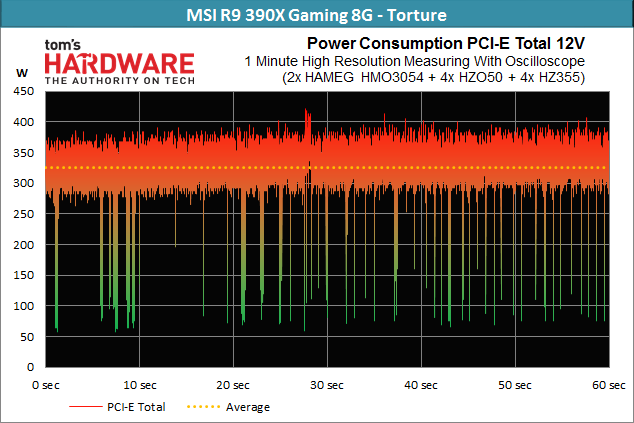
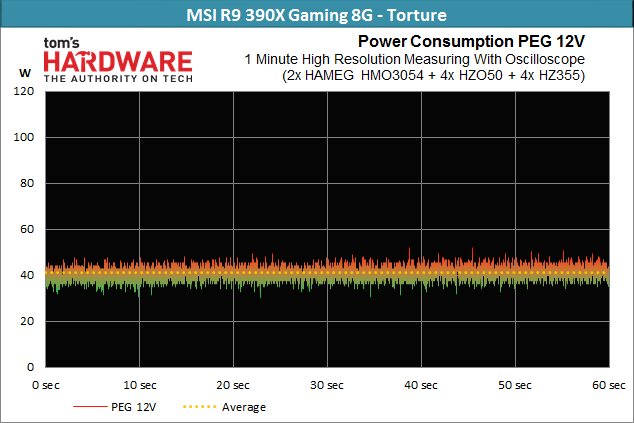
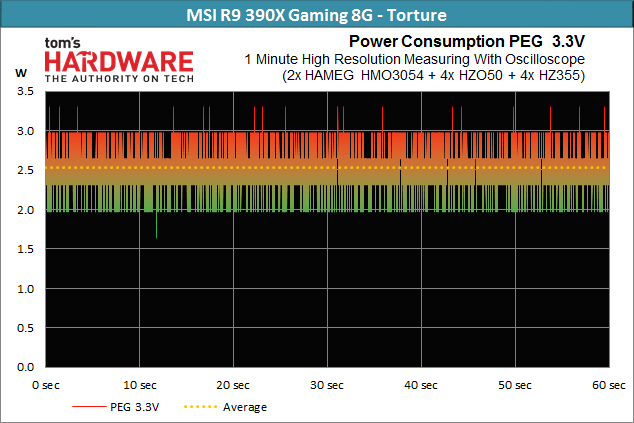
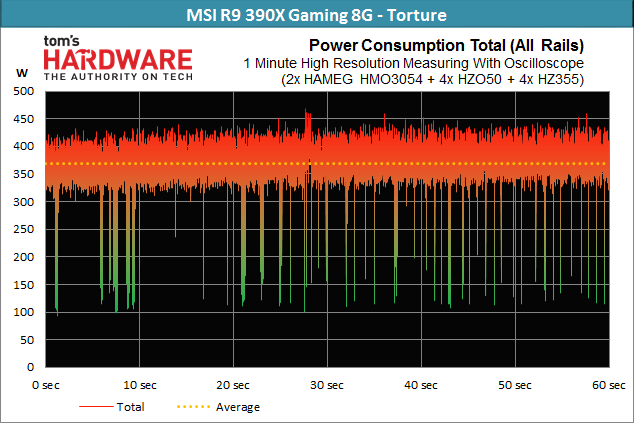
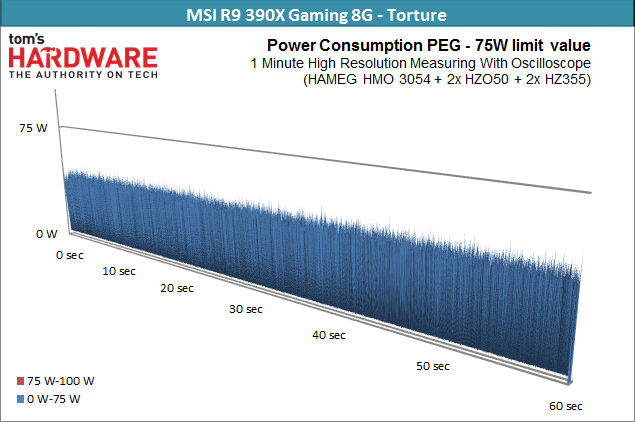
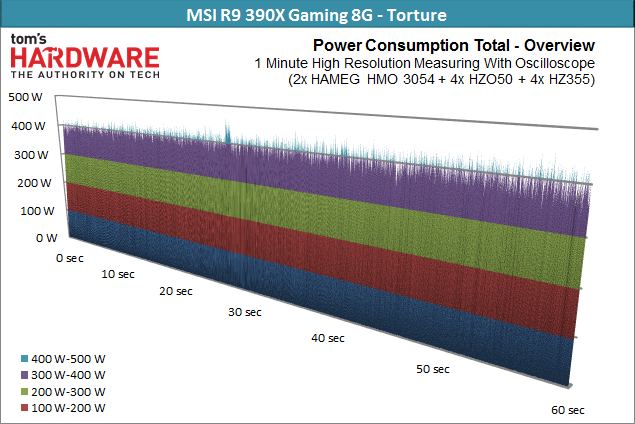
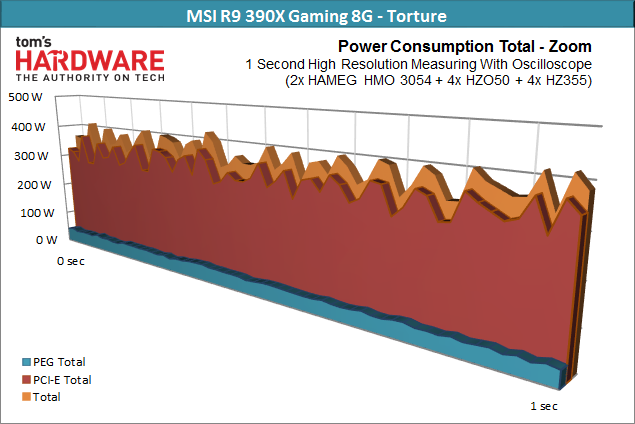
MSI R9 380X Gaming 2G
The R9 380 Gaming 2G comes in at 234W, which is 33W more than a comparable R9 285. That previous-gen board’s lower clock frequency isn’t low enough for this magnitude of difference in wattage. The 380’s GPU is simply pushed too hard and too far.
| Header Cell - Column 0 | Minimum | Maximum | Average |
|---|---|---|---|
| PCI-E Total: | 65.52 W | 218.40 W | 173.19 W |
| Mainboard 3.3V: | 0.00 W | 0.99 W | 0.30 W |
| Mainboard 12V: | 36.60 W | 75.60 W | 60.78 W |
| VGA Card Total: | 106.50 W | 294.46 W | 234.27 W |
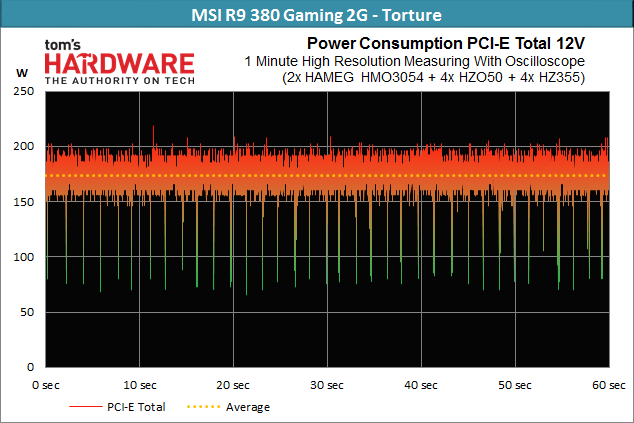
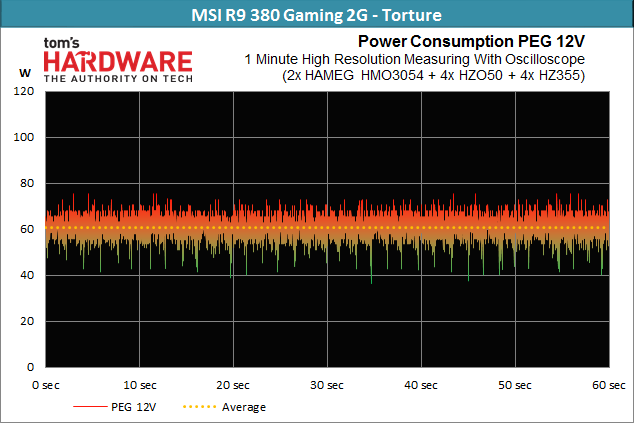
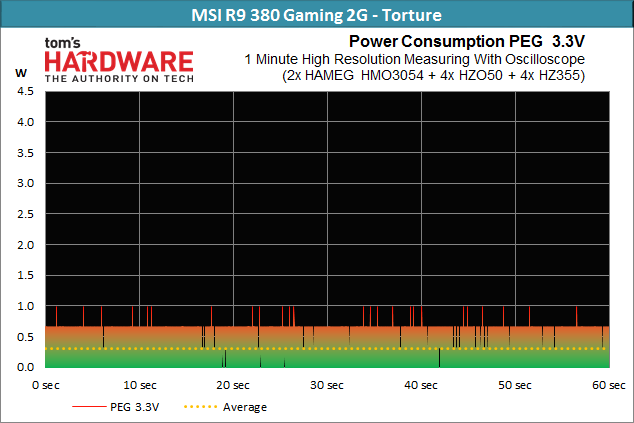
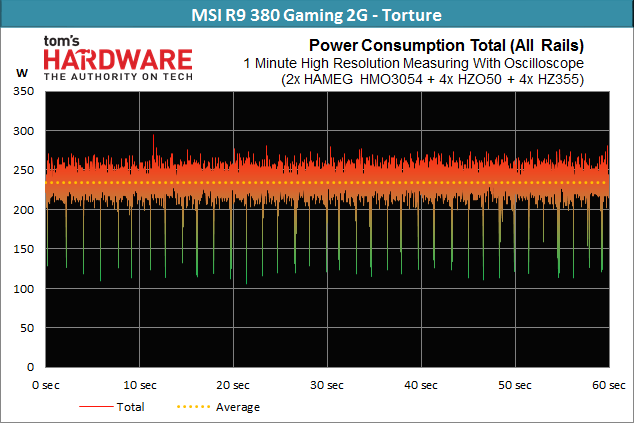
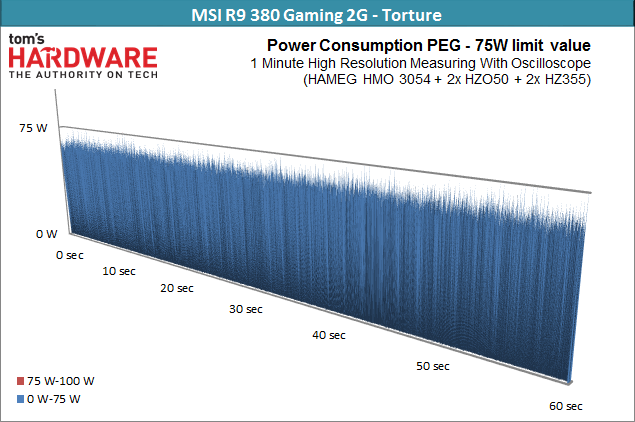
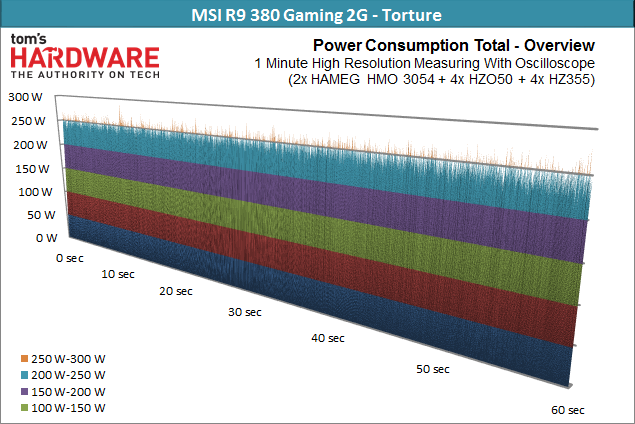
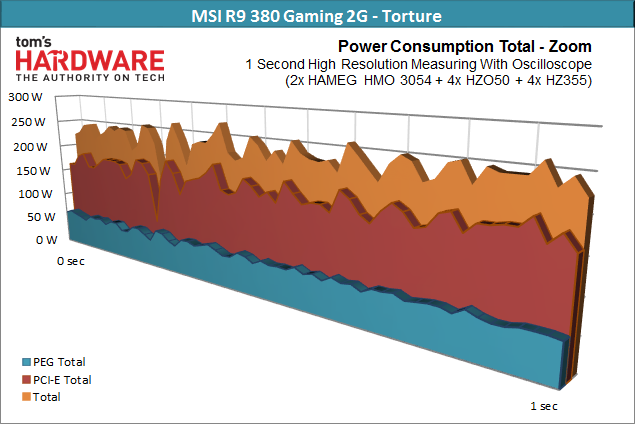
MSI R7 370 Gaming 2G
With age comes wisdom, apparently. The small Pitcairn-based graphics card manages to stay significantly under 150W. It’s nice that at least one of AMD’s new products leaves us with a positive impression.
| Header Cell - Column 0 | Minimum | Maximum | Average |
|---|---|---|---|
| PCI-E Total | 19.52 W | 85.68 W | 67.91 W |
| Mainboard 3.3V | 2.64 W | 3.96 W | 3.31 W |
| Mainboard 12V | 17.08 W | 93.80 W | 76.13 W |
| VGA Card Total | 43.62 W | 176.84 W | 147.36 W |
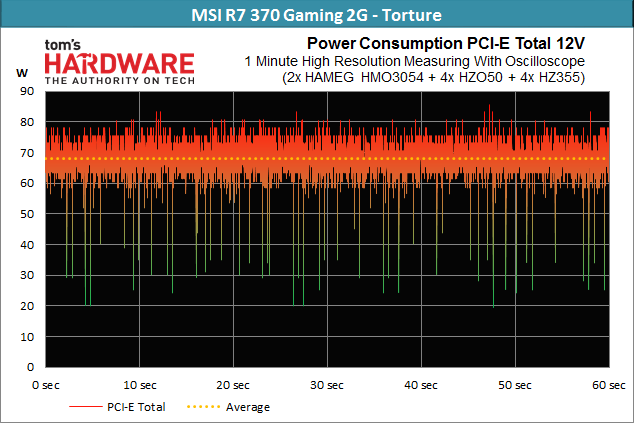
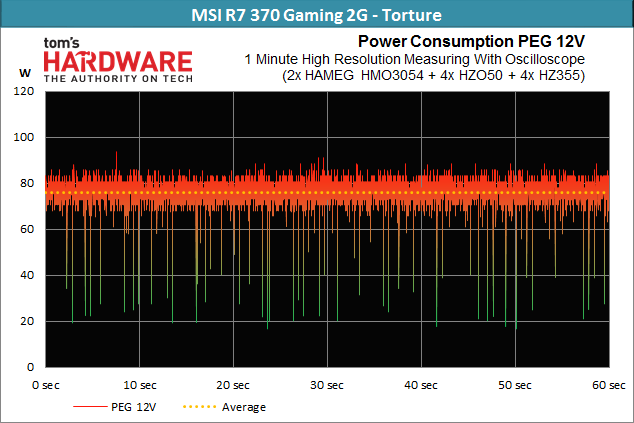
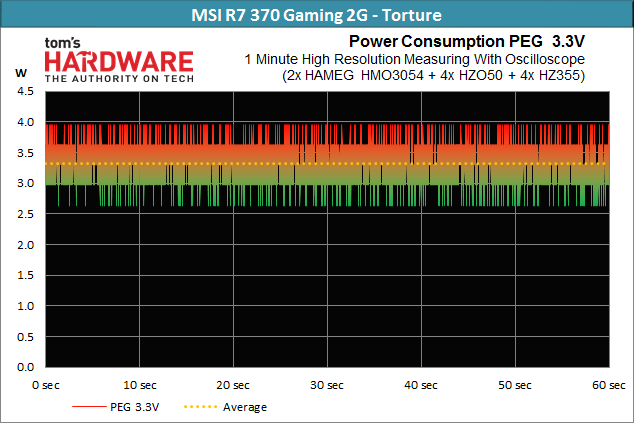
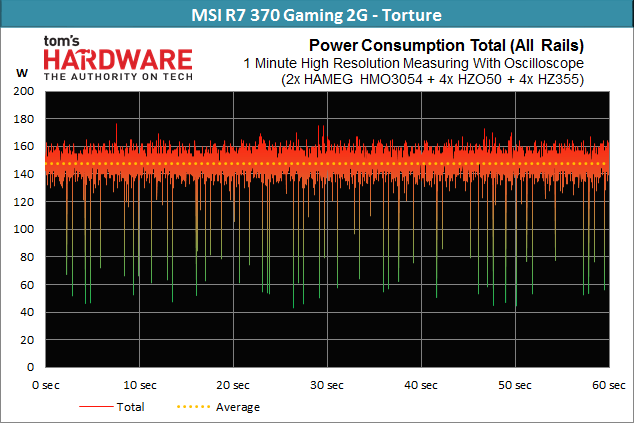
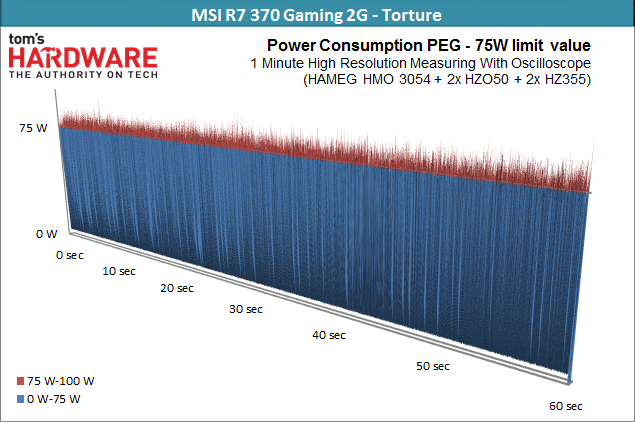
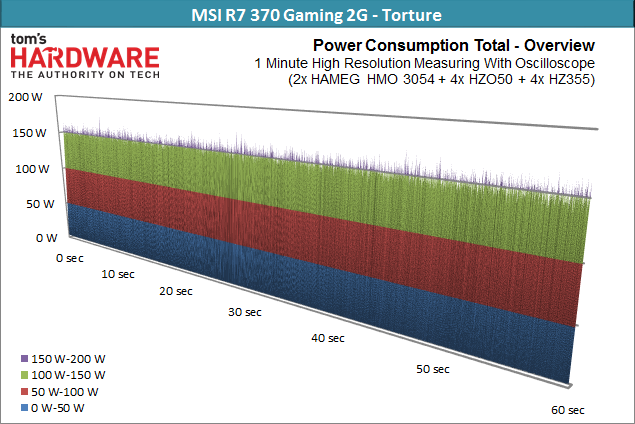
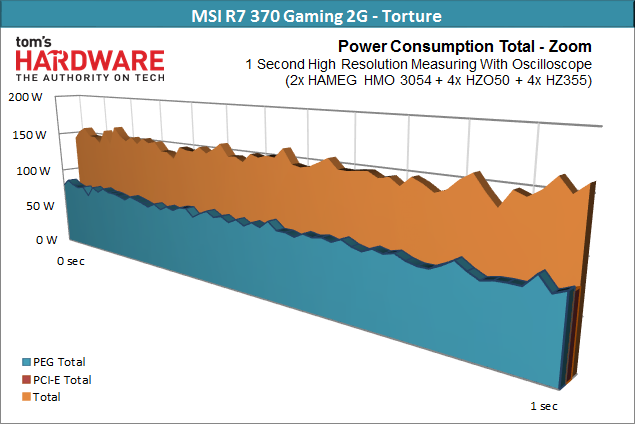
Get Tom's Hardware's best news and in-depth reviews, straight to your inbox.
Current page: Stress Test Power Consumption
Prev Page Gaming Power Consumption Next Page Infrared Temperature Measurements
Igor Wallossek wrote a wide variety of hardware articles for Tom's Hardware, with a strong focus on technical analysis and in-depth reviews. His contributions have spanned a broad spectrum of PC components, including GPUs, CPUs, workstations, and PC builds. His insightful articles provide readers with detailed knowledge to make informed decisions in the ever-evolving tech landscape
-
Grognak 390X at 4K is the only one showing anything that could be called an improvement and that's entirely due to the additional RAM, which you can already get on a 290X. I fear for the future.Reply -
envy14tpe Again I am left disappointed....AMD please stop doing this to me. So what I learned is the 390X is the same as the 290X at 1440p or below (which is 95% or more of gamers) and the 390X only excels at 4k but still only on par with the 980 (non ti). Looks like I'm abandoning AMD for my next GPU. damn it.Reply -
FormatC ReplyWhy did you ignore 390?
I can only test what I have. Too less samples :(
The 390X is'nt a bad card per se - it depends a lot at the price and your personal preferences. -
fudoka711 Wait, I think I'm misunderstanding something. Is the 390x a rebranding of the 290x, but costing $100 more??Reply -
HideOut ReplyNice to see 980 Ti still stomps everything, glad I bought one... a wise investment!
These are rebadge cards, their new cards are due out in days. Fanboy -
de5_Roy MSI R9 390X Gaming 8G's texture fillrate in the spec table (1st page) may have been incorrect. the gpu-z screeny shows 193.6 GTexels/sec.Reply
